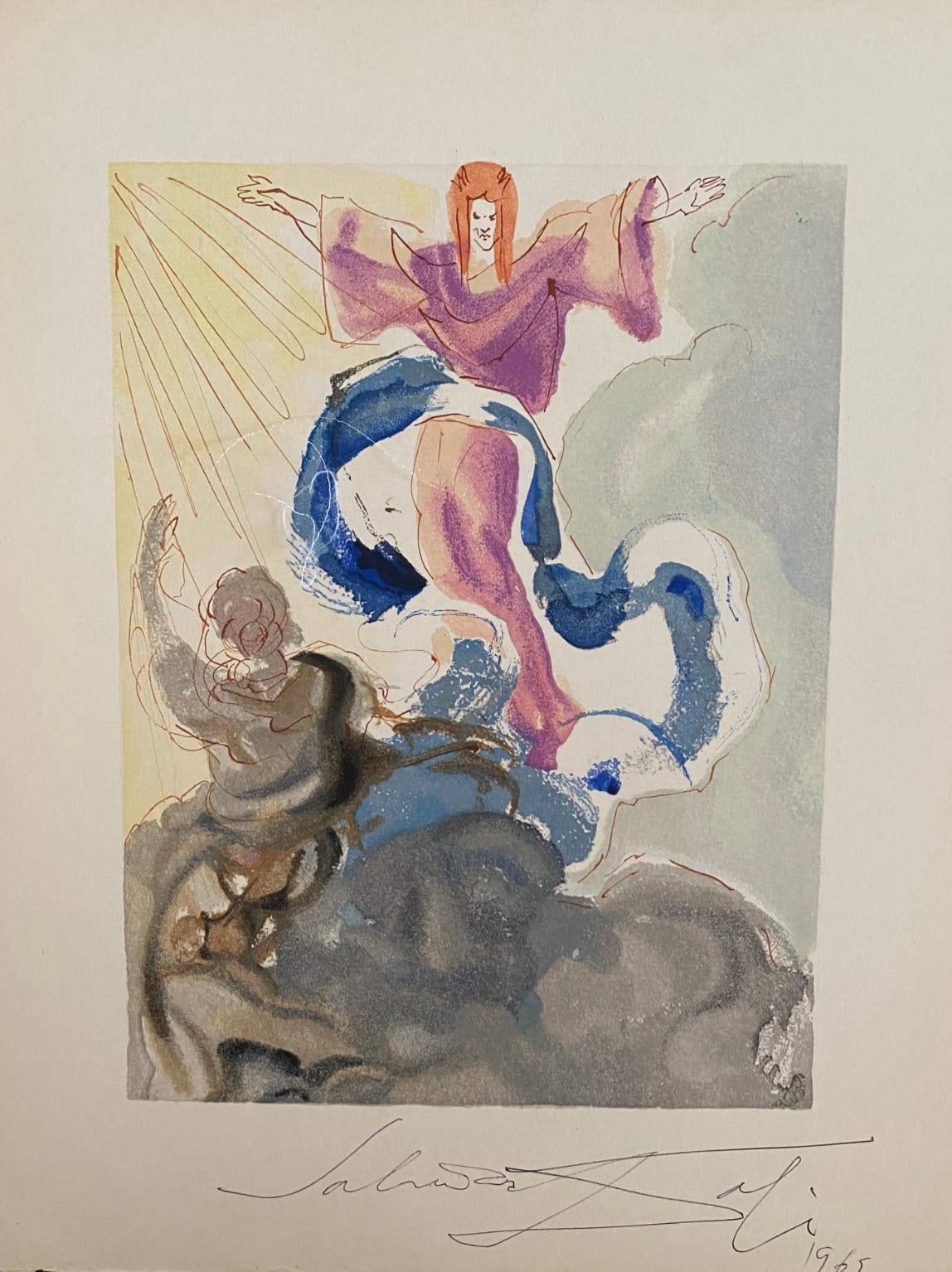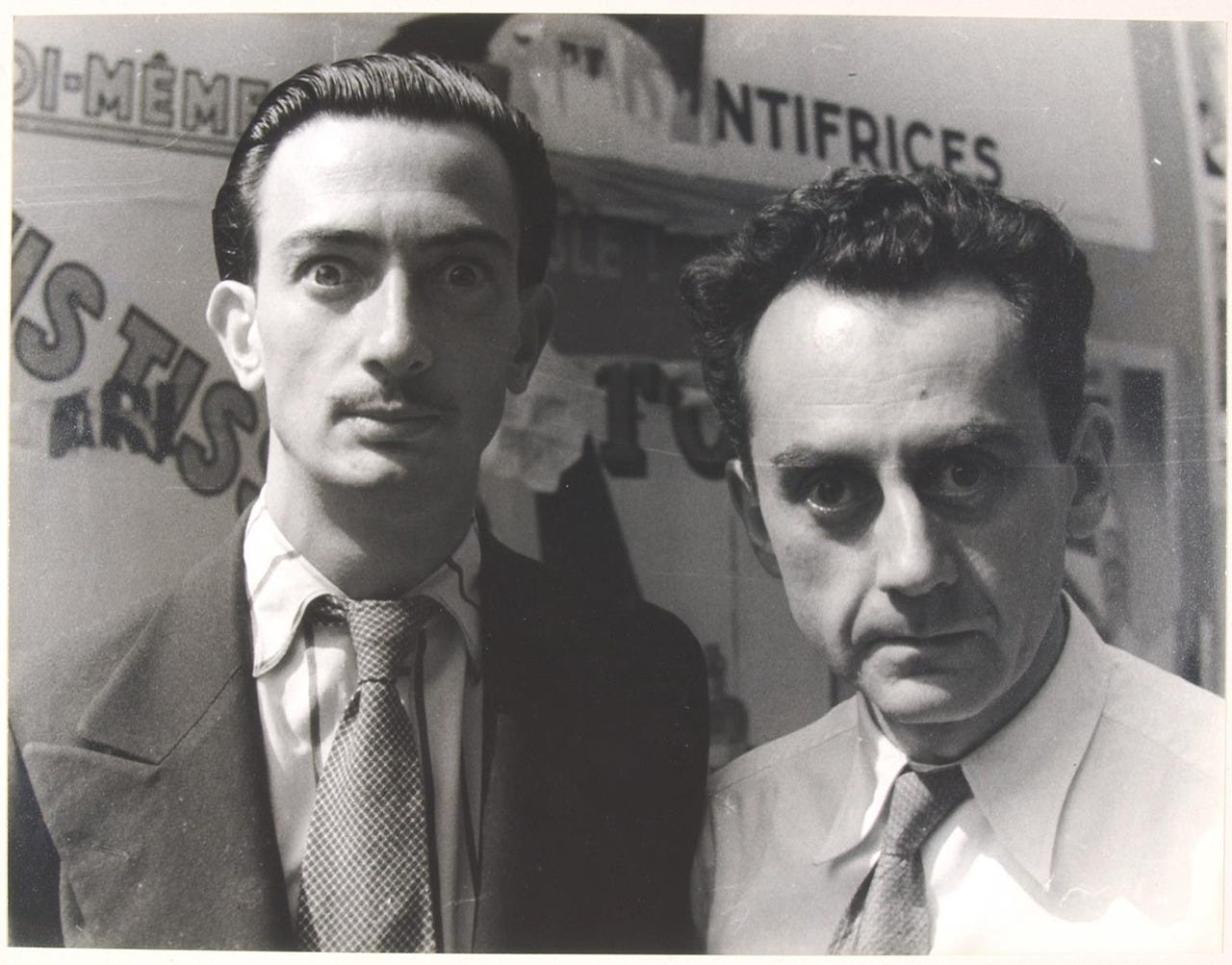Dalí, Photography, Surrealism, and his friend Man Ray
Salvador Dalí was a leading figure of the Surrealist movement, which emerged in the 1920s as a response to the time's political, social, and cultural upheavals. The movement was characterized by its focus on the subconscious and irrational and its use of dream-like imagery, symbolism, and automatic techniques such as free association and automatic writing.
Salvador Dalí was not only a master of painting but also a highly skilled draftsman. His drawings were characterized by their precise and detailed technique and fantastical and surreal subject matter.
Throughout his career, Dalí utilized his drawing skills to create a wide range of works, including illustrations for books, advertisements, and even fashion. He also made numerous drawings that served as studies for his paintings, sculptures, and other works, showcasing his mastery of anatomy, composition, and perspective.
One of the most notable examples of Dalí's drawing mastery is the series of drawings he created for the 1957 book "La Divine Comédie" by Dante Alighieri. These drawings, which depicted scenes from Dante's epic poem, showcased Dalí's ability to create fantastical and surreal imagery rooted in the classical traditions of drawing and painting.
Surrealism heavily influenced Dalí's paintings, sculptures, and other works, and he became known for his flamboyant personality and unconventional artistic vision. He often incorporated science, mathematics, and natural elements into his works, creating strange and fantastical landscapes that defied logic and reality.
One of Dalí's most famous works, "The Persistence of Memory," depicts a series of melting clocks that challenge the viewer's sense of time and reality. This painting is considered one of the masterpieces of Surrealist art and is widely recognized as a visual representation of the movement's focus on the irrational and subconscious.
In addition to his paintings, Dalí was also an accomplished writer and filmmaker. He wrote several books, including "The Secret Life of Salvador Dalí," which documented his personal experiences and artistic vision. He also collaborated with the filmmaker Luis Buñuel on the Surrealist film "Un Chien Andalou," which was widely regarded as one of the most influential avant-garde films of the 20th century.
Photography played an essential role in his artistic journey and was often used to complement his paintings and other works. Dalí collaborated with various photographers and artists throughout his career, but none had as much impact on his work as Man Ray.
Man Ray was an American modernist artist and photographer active in the Dada and Surrealist movements. He was known for his avant-garde style, which challenged traditional ideas about art and photography, and for his use of photograms, solarization, and double exposure. When Dalí met Man Ray in 1929, he was immediately drawn to his artistic vision, and the two became close friends and collaborators.
One of the most notable collaborations between Dalí and Man Ray was the "Paris Surrealist Exhibition" in 1938, where the two artists created a series of photomontages and photographic collages. These works combined photography, painting, and collage elements to create surreal and dream-like compositions that defied logic and reality. This collaboration between Dalí and Man Ray was a testament to the power of collaboration between artists and showcased the boundless possibilities of art and photography.
Aside from his collaborations with Man Ray, Dalí also used photography to capture and document his sculptures, paintings, and other works. He often created elaborate and staged scenes that showcased his unique and flamboyant personality, which helped to further expand his reputation as one of the most unconventional and influential artists of the 20th century.
Salvador Dalí's relationship with Man Ray and his photography use helped further expand his artistic vision. It contributed to his legacy as one of the most innovative and influential artists of the 20th century. The collaboration between the two artists was a testament to the power of collaboration between artists and showcased the boundless possibilities of art and photography. Through his use of photography, Dalí pushed the boundaries of what was considered art and demonstrated the limitless potential of the medium.
Salvador Dalí's contributions to the Surrealist movement were significant and helped to expand the boundaries of what was considered art. He was a visionary artist who pushed the limits of the medium and demonstrated the limitless potential of the subconscious and irrational. Through his works, he left a lasting impact on the art world and inspired generations of artists to explore the power of the imagination and the subconscious.






